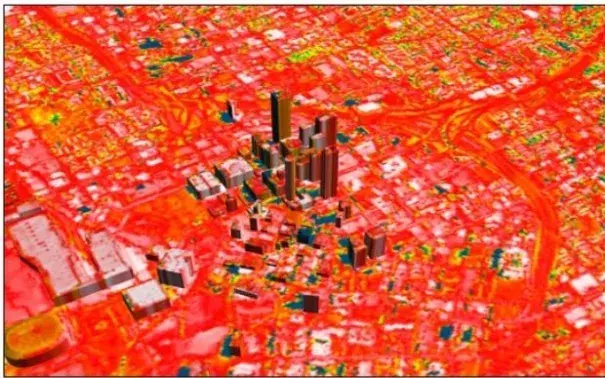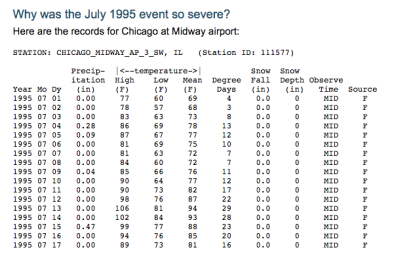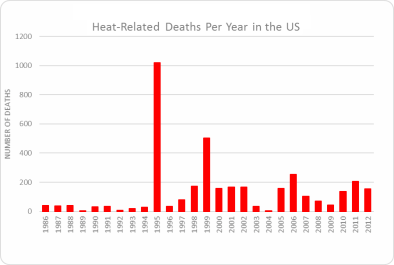Headline
Twenty years after ‘95: What climate change means for heat waves, cities and forecasting
United States

Urban heat island. Image: NASA
The 1995 Chicago heat wave was a defining moment for the city. With four days of non-stop, sweltering heat and humidity, hospital emergency rooms were overwhelmed. There were thousands of heat-related illnesses and more than 700 deaths... One of the most common misconceptions about climate change is that locally cold temperatures are incompatible with global warming. On the contrary, climate disruption makes it difficult to predict local weather patterns with certainty, but guarantees more heat waves and other extreme weather events. Cities face a unique challenge: Temperatures in urban areas can be as much as 10 degrees Fahrenheit hotter than in open air, thanks to the urban heat island effect
Related Content
Headline

Apr 1, 2016 | Illinois State Climatologist Office, Illinois State Water Survey, U of I
The 1995 Heat Wave in Chicago
Headline

Apr 1, 2016 | Illinois State Climatologist Office
Heat-Related Deaths in the US
Science Source
| Annals of Internal Medicine
Near-Fatal Heat Stroke during the 1995 Heat Wave in Chicago
Jane E. Dematte, Karen O'Mara, Jennifer Buescher et al
Headline

Apr 1, 2016 | Chicago Magazine
How 739 People Died in a Chicago Heat Wave


